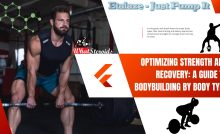Speed of Exercise Execution
There is not a generally valid opinion about the right speed of exercises. Various sources give us directly conflicting advice about how fast to perform one repetition or sets of repetitions. Some propose to perform one repetition in six seconds, others say to perform only two. There is also superslow techniques when one repeat can take up to 30-60 seconds. So, what of this assertion is true? And why such an important parameter as the time of a single repeat is so different?
In order to answer these questions, you can follow two ways. First one is to understand what modern physiology think about muscle contraction. The second one is to analyze the experience of many years of practice.
By the way, modern medical science knows very few about how the muscle growth, this being a subject that interest most of the bodybuilders. That’s why bodybuilders continue to rely on both their personal experience and the experience of their predecessors. And this experience is more important than any other scientific work.
One of the classic opinions about speed of exercises recommends to starter bodybuilder to choose a slow tempo of exercise - two seconds for lifting the weight and four seconds for lowering it. Such manner of execution is quite good. Why?
Time and Speed of Exercises
Mainly because new players do not have the required coordination skills. In order to learn new exercises and avoid any injury risks, they have to expend time for reps. That’s why for lowering the weight time is deliberately doubled - four seconds to two.
Must Read: Does An Injury Stop A Steroid Cycle?
Of course, these numbers are provisional, but they serve as a kind of benchmark for the expected rate of exercise. By the way, in the beginning, it’s a good idea to keep track of time with the help of a partner with a stopwatch. Later, you will be able to do it due to the internal account - after several months of continuous training, this skill becomes a subconscious habit.
Additionally, a six-second tempo can learn to feel the muscles work. The first steps in bodybuilding are totally devoted to the development of this skill. Not feeling the intrinsic muscles work to make hard you to organize more or less decent training program for their stimulation.
Lowering Weight
Also, it is important the fact that for lowering the weight is specially allocated more time than for rising it. To this conclusion, bodybuilders come with time. At the beginning of the bodybuilding lowering the weight was not so closely analyzed - it was thought that to win the weight is enough to overcome the force of gravity, then the fate of weight was not interested in nobody.
This attitude to weight lifting is still living in weightlifting. However, experimenting with reversed phase, when the weight is lowered is not arbitrary, and under the control of muscles, it was found that in this case, the muscles respond better to muscle growth.
And the series of experiments was carried out only with the negative phase of the movement - the weight was lifted by partners and athlete just lowered it down. It was found that in a negative mode, the muscles are able to cope with large weights, and the desired workout stress was slightly higher than in the positive version.


The Negative Speed of Exercises Phase
It is not always possible to repeat such training sessions, but you can get some use out of them. First of all, you need to understand that the negative phase in terms of power performance is as important as a positive, in terms of muscle growth - even better than the first second.
However, there is not an only true and appropriate for all occasions rules and it can not be when it comes to speed of exercises. In the same weightlifting sport, unnecessary negative subsidence is avoided not due to the indifferent attitude towards them, but because of the need to save power reserves.
And power rates of weightlifters prove the validity of this approach. But most of them do not want to increase their muscle weight. Why? Because overcoming this weight category increase digit grid of power performance, which naturally drops back.
Power and Speed of Exercises
In bodybuilding, the situation is different, but there is still a connection between power results and muscle growth. Just the accent is focused on muscle growth. It would be an illusion to hope that using frail weights on the bar. You would be able to build pounds of functional muscle. The functionality includes the ability to cope with the weight. It should happen in all the phases of a single movement - both up and down.
With time almost all athletes move to a more rapid tempo of speed of exercises. Gradually transition may take the following time modes: 2 +4, 1.5 +3, 1 +2. In this case, for negative movements is allocated more time too, being increased the speed of individual reps too. This has an explanation too. Firstly, staying for a long time addicted to a high-speed tempo you would have neither physical nor psychological resources. Is something absolutely normal to want to diversify it? On the other hand, skeletal muscles are able to do relatively slow and explosive movements. And in fact, in both cases work the same muscles. But they have to use different types of fibers - slow and fast.
Also have to be said that the same reps performed with different weight and speed. It couold at solve a very different problem.
In this case, we talk about three types of reps speed, namely low, medium and high.
Low Speed of Exercises
In the case when the weight is maximum you can reach. For example, raising the bar in the deadlift, then you will not be able to perform it quickly. But even with relatively small weights is very useful to deliberately understate the speed of exercises. Thus solved two problems at once.
- Joint and ligaments get a big load during a slow movement. Their strength is a must for training with weights in the future. In order to accented work on ligaments is recommended. Even if you do pause for a few seconds at any point of the amplitude exercise. That is in addition to the slow speed of their implementation.
- In case of such low tempo, extremely developed muscles are saturated with blood, as in case of pumping-training. Also, they need nutrients that cause their further growth.
High-Speed Exercise Execution:
Explosive strength, provided by fast muscle fibers, is achieved by the rapid speed of execution of the exercise. Here can be included weightlifting, about which we talked above.
- For high speed, the execution has to be used weights no bigger than 70% of your maximum potential. It is very important that the projectile velocity increased throughout the range of speed of exercises, lifting the shell into the upper point of inertia.
- High-speed training greatly develops fast muscle fibers with potential for growth, breaking the overall growth of muscle tissue athlete.
- This kind of training is recommended only in case of basic exercises and only those who need to strengthen their ligaments
Checkout Our Article: How Exercise Helps Asthma Patients in Their Life
Average Speed of Execution:
This type of training is most popular because uses the maximum number of muscle fibers of all three (fast, slow and intermediate) types.
- The performance of the exercises in this type of training is uneven throughout the different phases of working with a weight. Lowering the weight is 2 times slower than recovery (phase of muscle contraction). This is due to the fact that the weight was always under your control, and not "rushed" down, reducing muscular work and threatening injuries.
- Average speed of training allows you to work in a wide range of weights from 0 to 90% of personal single maximum, which allows using this type of training in a variety of training programs designed for the different number of reps.
As you see in order to get full development of your natural potential you have to train in different tempo regimes. Thus it will be possible to vary their workouts - sometimes alternating work on muscle endurance, selecting a mode of four to six seconds, with work on speed and power in an explosive manner.
In this case, once in six months or a year can be carried out short training with super slow execution. For example, fifteen or thirty seconds for a rep. The only limitation to conduct such experiments on changing the speed of exercises can be the lack of experience.
Progressive Speed of Exercises
In the first three to six months of training, it is better to stick to the classic version of six seconds - two-plus-four. And then, having already gained experience you will be ready to go further searching best option for yourself.
Learn to feel the load. This ability come with time, but once you manage to do it you will be able to choose the speed of execution that best fit your potential and your goals. A good advice is to try to do some reps by simply closing your eyes. This way you will get your mind and your sense of the movement.
Must Read Our Article: How Good Are Bodyweight Exercises
Recent Posts
Optimizing Strength and Recovery: A Guide to Bodybuilding by Body Type
Every body tells a different story—and in bodybuilding, honoring that story is the key to…
Fitness Lessons from A Navy Seal’s Training Routine
Navy SEAL training is designed to forge elite tactical athletes. It’s not your average gym…
Exploring BPC-157 Healing Properties
BPC-157 is a synthetic peptide derived from a protein found in the stomach, known for…
The Ultimate Guide to Foods That Support Hormonal Balance for Bodybuilders
Hormonal balance is crucial for bodybuilders aiming to maximize muscle growth, recovery, and overall health.…
Steroid Shops Review
osgear.se Reviews ⭐⭐⭐⭐⭐ Score: 97.78% Osgear has consistently maintained a 99% customer satisfaction rate across key…
ACE-031: A Powerful Myostatin Inhibitor
ACE-031 is a synthetic peptide designed to block myostatin, a natural regulator of muscle growth.…



